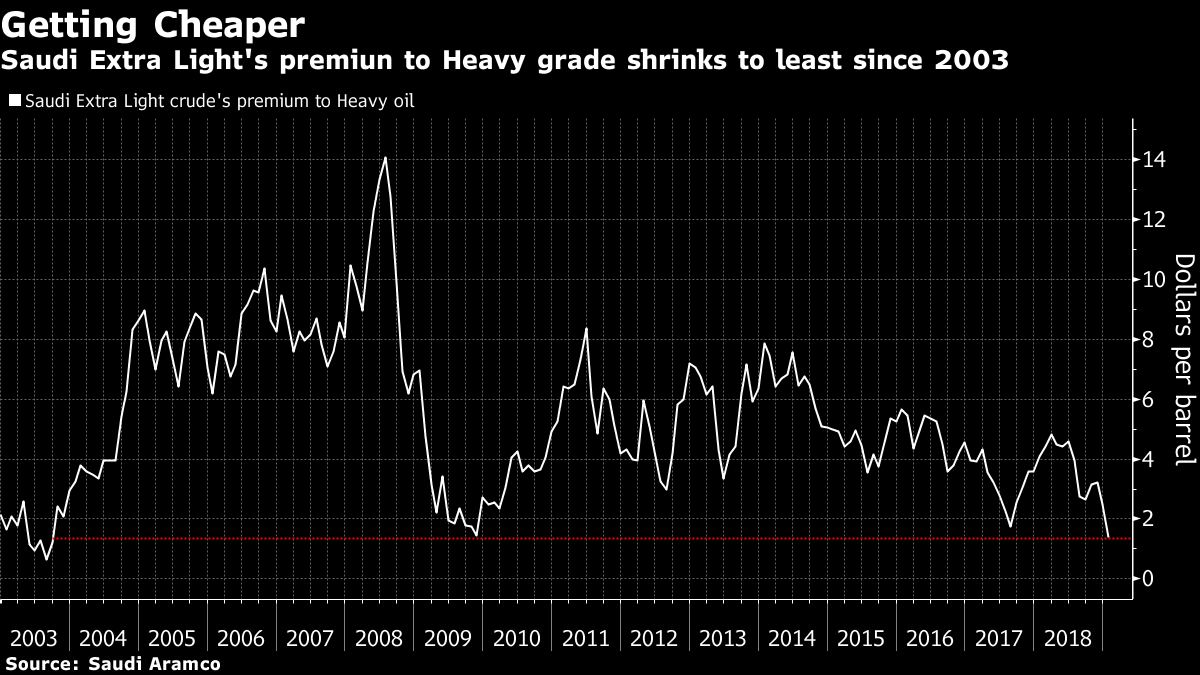Saudi Arabia’s crude pricing in the world’s biggest oil market is reflecting tumbling profits from making cleaner fuels in Asia.
State-run Saudi Aramco slashed the premium of its Extra Light grade to its Heavy crude to the lowest since 2003, data compiled by Bloomberg show. When lighter varieties of oil are refined, they typically yield more of relatively clean products such as gasoline and petrochemical ingredient naphtha. The market for such fuels has been mired in a glut over the past two months.
While the world’s biggest oil exporter cut pricing on all its grades for January sales to Asia in a bid to take back market share lost to the likes of Russia and the U.S., the significant reduction in the premium for its lighter varieties shows the kingdom is probably taking into account the shrinking margins in the region for cleaner fuels as well as focusing on tackling competition from other sellers.
Fereidun FesharakiPhotographer: Charles Pertwee/Bloomberg
“Gasoline and naphtha are dying and margins still haven’t reached their worst,” Fereidun Fesharaki, chairman of industry consultant FGE, said in an interview in Singapore. “In Asia, Saudi prices are based on purely product yields and the competition they see from the outside.”
Oil refiners in Asia are fetching better returns by producing dirty fuel oil than from cleaner naphtha for the first time in more than a year, data compiled by Bloomberg show. Concern over falling petrochemical consumption is said to be dragging down prices of the so-called light distillate, while stockpiles swell in the regional trading hub in Singapore.
The gasoline refining margin in Asia was at a discount of 14 cents a barrel to Brent crude on Tuesday, according to PVM Oil Associates data. It had dropped to 66 cents on Nov. 28, the biggest discount since 2011.
In China — one of the key markets where Saudi Arabia is seeking to reassert its crude dominance — refineries are doubling down on processing to boost diesel output aimed at heating millions of homes this winter, and therefore contributing to an increase in supplies of other products such as gasoline and naphtha. The nation has also raised its total fuel-export quotas by 12 percent for 2018 in a move that would allow more seaborne sales.
The premium of Saudi Arab Light crude, which yields more light as well as middle-distillate fuels such as diesel, over Arab Heavy for January sales to Asia also shrank to the smallest since November 2009, data compiled by Bloomberg show.
Meanwhile, with global crude prices stuck in a bear market, OPEC — in which Saudi Arabia is the largest producer — and its allies including Russia will decide this week on output curbs that may reduce export flows starting as early as January. Still, Saudi and Russian officials are said to differ on how to share the burden of any cuts. At the same time, the U.S. is pumping record amounts and shipping more to Asia.
“Saudi is facing more competition now and the U.S. competition becomes much bigger next year,” FGE’s Fesharaki said.



